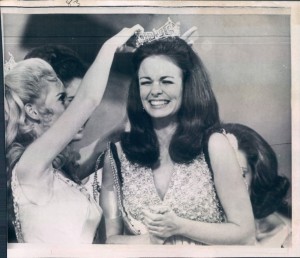Today a book review I wrote of the new book Sportista: Female Fandom in the United States, appeared on The Rumpus. This may or may not mean I am the next Cheryl Strayed... This summer my husband and I had Olympics fever. We watched NBC’s tape-delayed broadcast every night and live online coverage of our favorite sports (gymnastics for me, track and field for him) during the day. But our viewing habits diverged in one significant way: he likes to fast-forward through all the fluff. What’s “fluff?” It’s the pre-recorded and packaged segments about an athlete’s training or family history designed to tug at the heartstrings. I like knowing about who to root for and the athletes’ stories matter to me.
According to Andrei Markovits, professor of comparative politics and German studies at the University of Michigan, and Emily Albertson, my love of fluff and my husband’s disdain for it is not at all surprising. In their new book, Sportista: Female Fandom in the United States, Markovits and Albertson examine the development of female sports fans since the passage of Title IX 40 years ago. Just as we have more successful female athletes than ever before—60% of the American Olympic medal haul, and two-thirds of the golds, were won by women—we also have more Sportistas than ever.
Sportistas differ from their male counterparts in terms of numbers and substance. (And, no, it’s not that they watch sports just to spend time with their husbands, as a recent study by two Communications professors reportedly found.) Markovits and Albertson present evidence that one of the ways male and female sports fans differ is that starting in childhood girls are more likely to focus on narratives than boys, which continues into adulthood. Hence, I like fluff and my husband doesn’t, affecting the type of sports coverage I prefer.
Despite the fact that I regularly write about women and sports, Markovits and Albertson would not regard me as a Sportista because I don’t religiously follow and have expert knowledge about what they label “hegemonic sports”—the Big Four of baseball, basketball, football, and hockey. So Sportistas like Albertson almost always focus on male sports and on sports that offer very few professional opportunities for female athletes. Albertson knows her sports history and has even been accepted into the fraternity of University of Michigan undergraduate football fans, despite never playing football herself. According to Markovits the purpose of Sportista is to explain how a young female like Albertson becomes credentialed as a Sportista in the 21st century.
Fun fact alert! Toward the end of the review I write:
Despite sports generally being less important in female peer groups, some women do become serious sports consumers—they become sports journalists. In their discussion and analysis of female sports journalists Markovits and Albertson are at their best. They discuss the differences among women who report sports, women who analyze sports, and women who cover sports for print and radio and those who do so on television. They explain that while numerous studies have found that attractiveness helps build credibility in spheres like politics and business, for female sports reporters attractiveness is actually a liability. The earliest female sports reporters were known for their beauty and not for their knowledge (one was actually Miss America), a criticism that haunts female sports journalists to this day. Today some women create a niche for themselves by covering sports that aren’t part of the Big Four as a way to overcome the numerous barriers to entry, promotion, and credibility that a professional Sportista must face.
My mother actually crowned that Miss America I mention, Phyllis George Miss America 1971. Small worlds collide, huh?
